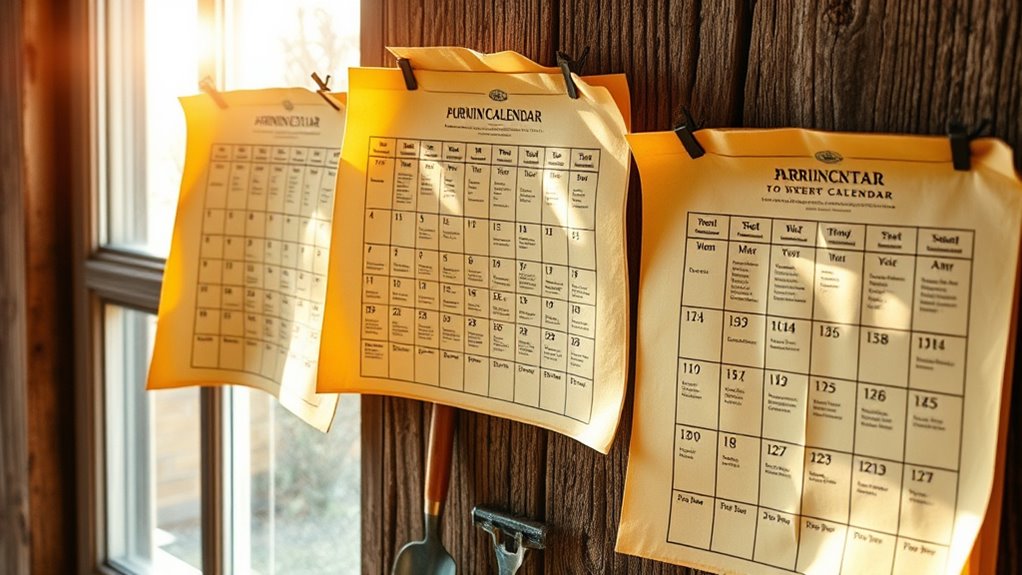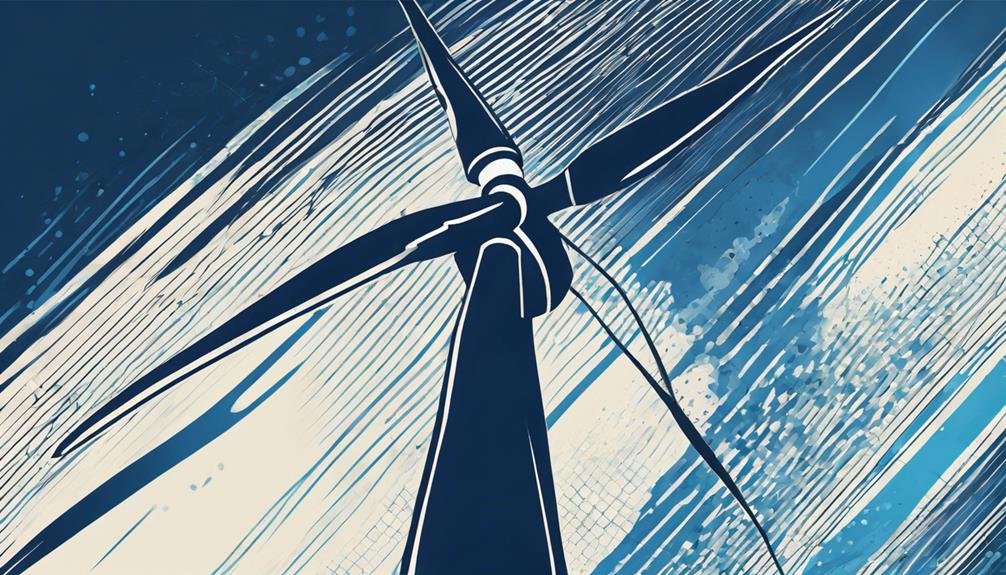Before relying on pruning calendars again, take time to assess your plants’ current growth stages, health, and specific needs. Check for signs of active growth, disease, or pests, and consider your local climate and microclimates. Clarify your pruning goals, whether shaping, fruiting, or health. Learning about your plants’ unique requirements and timing their care accordingly guarantees better results. Keep exploring to discover how these insights can improve your pruning practices.
Key Takeaways
- Assess plant health, signs of activity, and environmental conditions to determine the optimal timing for pruning.
- Understand your local climate, microclimates, and seasonal patterns to tailor pruning schedules effectively.
- Identify the plant’s bloom and fruiting cycles to avoid disrupting flowering or harvest periods.
- Define specific pruning goals—such as shaping or disease removal—before consulting calendars.
- Seek regional expert advice and local resources for precise, location-specific pruning timing guidance.
Understand Your Plants’ Growth Cycles and Needs
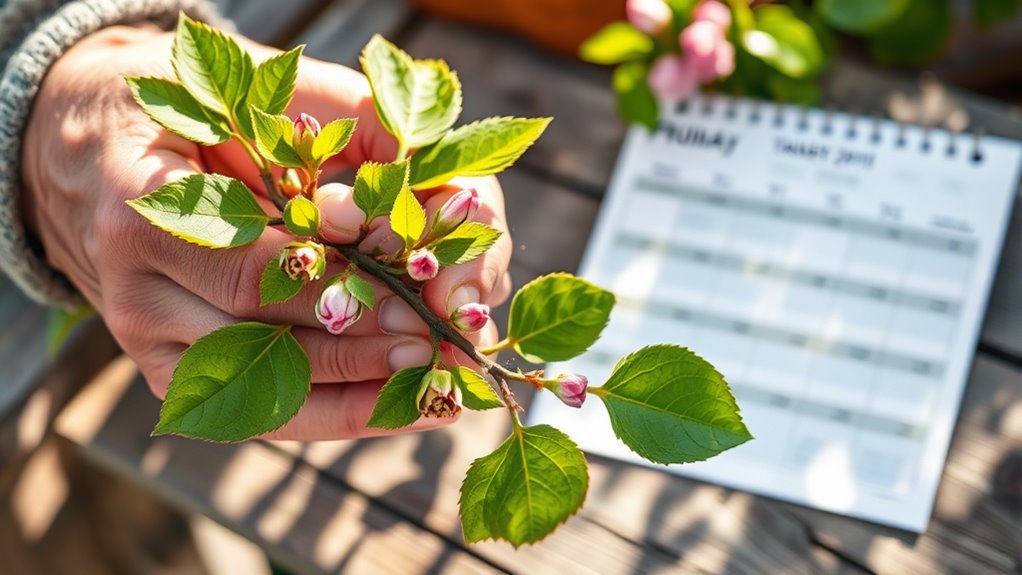
To effectively prune your plants, you first need to understand their growth cycles and specific needs. Recognizing plant physiology helps you determine when your plants are actively growing or dormant, guiding ideal pruning times. During active growth, plants focus energy on new leaves and branches, making it the best time to prune for shape and health. Soil nutrition plays a vital role too; healthy, well-nourished soil supports vigorous growth, reducing the risk of stress or damage when pruning. By observing how your plants respond to seasonal changes and understanding their natural development patterns, you can tailor your pruning approach. Additionally, understanding plant physiology helps you identify the signs of active growth versus dormancy, ensuring you prune at the most beneficial times. This knowledge helps guarantee your plants stay healthy, resilient, and productive, setting a strong foundation before you even pick up your pruning tools.
Research Local Climate and Seasonal Variations
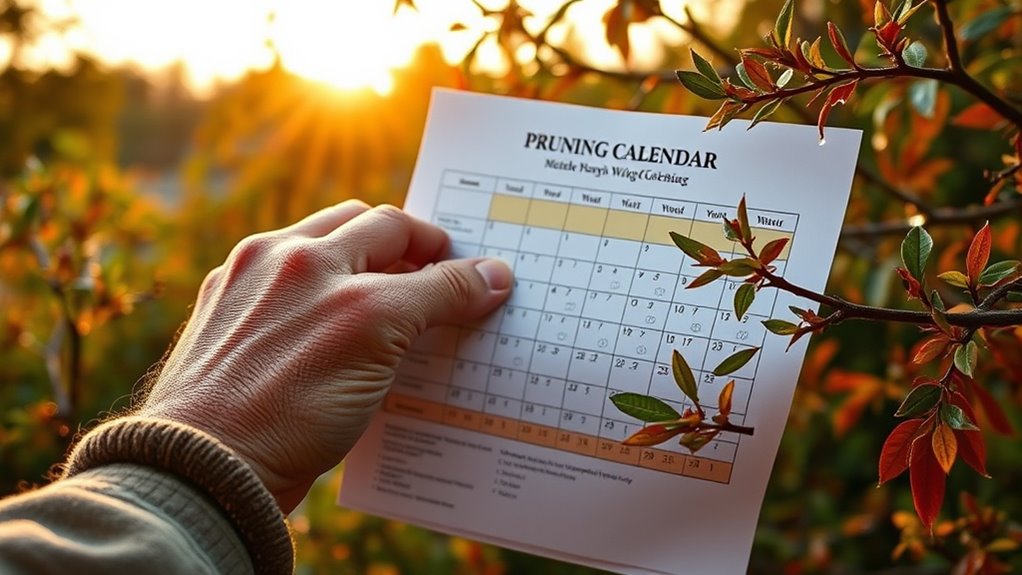
Understanding your local climate and seasonal patterns is essential for effective pruning, as these factors influence plant growth and stress levels. Knowing when to prune helps prevent damage and encourages healthy development. Research your area’s temperature ranges, rainfall patterns, and frost dates, as these affect plant responses. Additionally, consider how soil composition impacts root health and nutrient uptake, which can influence pruning timing. Seasonal variations also affect pest control strategies—certain pests are active during specific times, making targeted pruning more effective. Keep in mind:
- Adjust pruning schedules based on temperature and rainfall
- Use soil composition knowledge to improve plant resilience
- Time pruning to minimize pest activity and damage
- Incorporate watering techniques and moisture management to support healthy growth during seasonal changes.
Identify Your Garden’s Microclimates
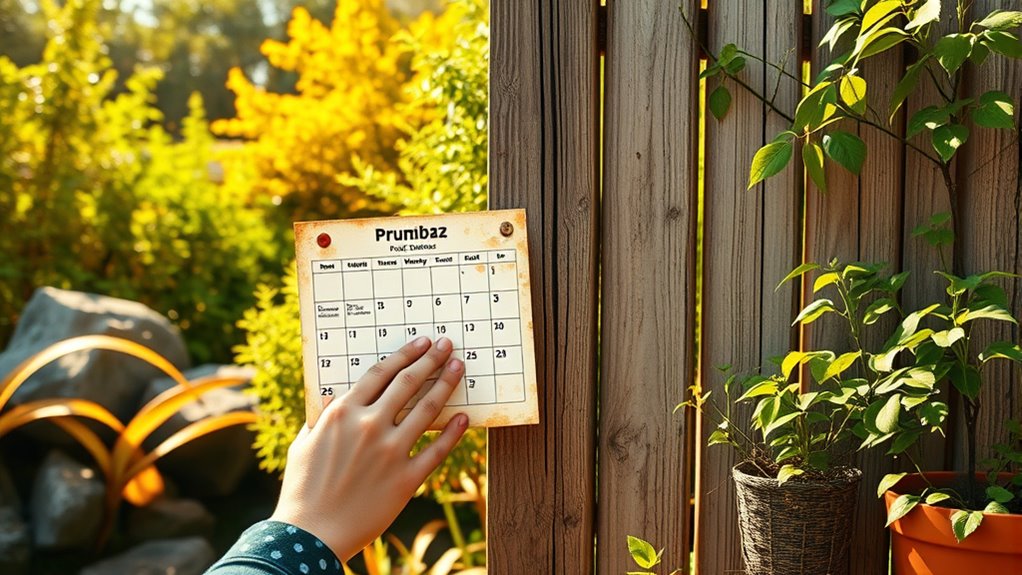
Recognizing the unique microclimates within your garden can considerably improve your pruning strategy. Microclimate effects, such as variations in sunlight, wind, and temperature, influence how plants grow and respond to pruning. By observing areas that stay warmer, cooler, wetter, or drier, you can better understand your garden zoning. For example, sheltered spots might extend the growing season, while exposed areas may require different pruning times. Mapping these microclimates helps you tailor your approach, ensuring you prune at ideal times for each zone. This awareness prevents unnecessary damage and promotes healthier growth. Taking the time to identify these subtle climate differences allows you to move beyond generic calendars and develop a more precise, effective pruning plan tailored to your garden’s unique conditions. Exploring diverse designs and materials for planters can further enhance your garden’s microclimate management and overall health.
Clarify Your Pruning Goals and Objectives
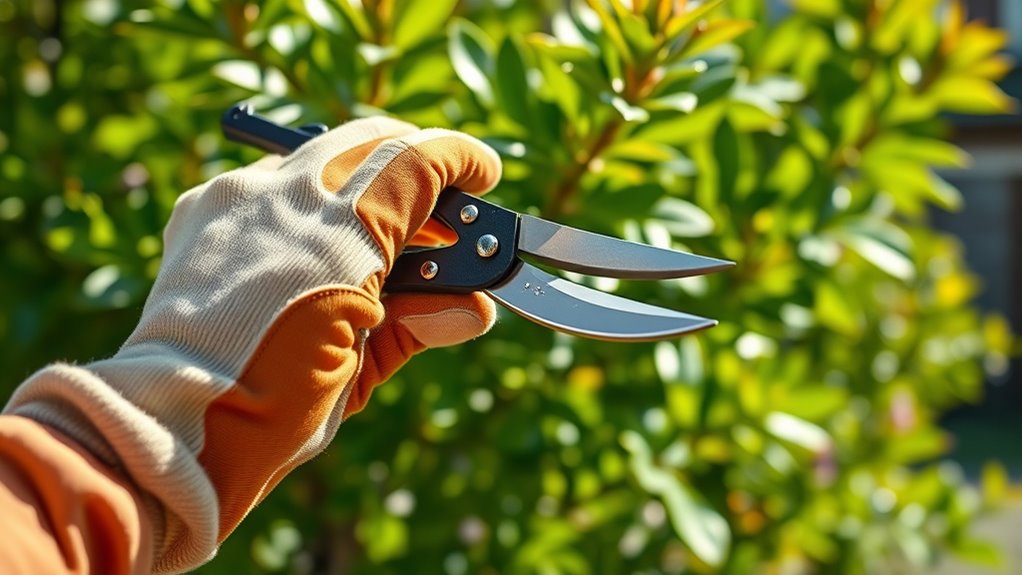
Before diving into pruning, you need to determine clear goals for your efforts. Knowing what you want to achieve helps you select the right pruning techniques and tools. Are you aiming to improve fruit production, shape the plant, or remove dead wood? Clarifying these objectives guarantees you don’t over-prune or damage your plants. Consider these key points:
Set clear pruning goals to choose the right techniques and avoid plant damage.
- Focus on the health and structure of your plants
- Choose pruning techniques that align with your goals
- Pick tools suited for specific tasks to avoid unnecessary damage
- Understanding efficient general ledger coding can help you track your progress and resource allocation during your pruning projects.
Observe Your Plants’ Current Condition and Health

Once you’ve set your pruning goals, it’s time to assess your plants’ current condition and health. Check for signs of stress, disease, or pests, and look for areas that need attention. Evaluate the plant’s overall vitality—are the leaves vibrant or yellowing? Consider the plant nutrient levels; healthy plants should have lush, green foliage. Also, examine soil moisture, ensuring it’s neither too dry nor too soggy, as improper soil moisture can weaken plants and hinder growth. Look for dead or damaged branches that need removing, but avoid pruning too much if the plant appears stressed. Taking these steps helps you make informed pruning decisions, protecting your plants’ health and promoting better growth in the long run. Additionally, monitoring watering techniques and water requirements can prevent over- or underwatering, which are common issues in indoor plant care.
Learn About Specific Species’ Pruning Requirements
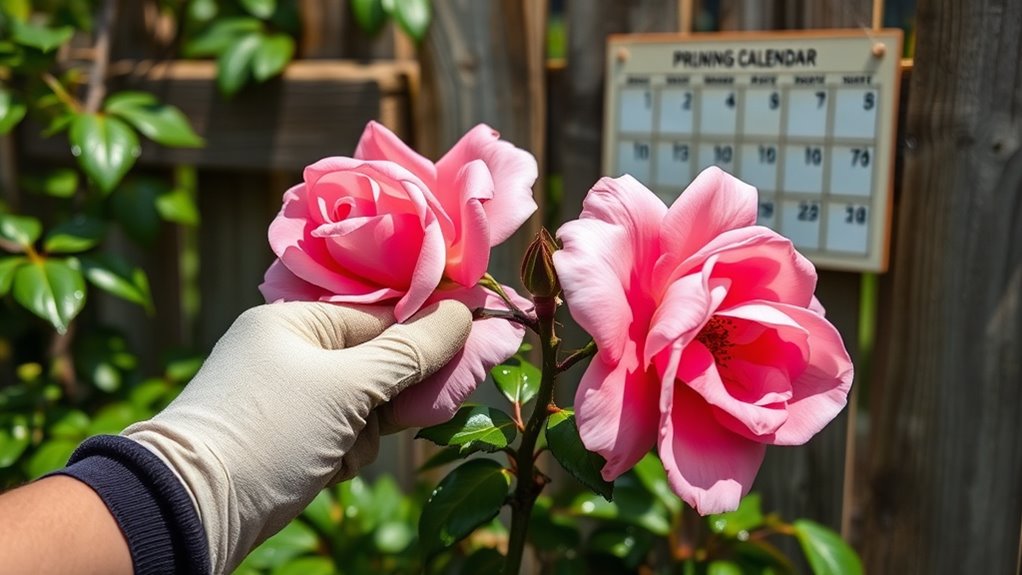
Understanding the specific pruning needs of different plant species is essential for healthy growth. Each species has unique requirements based on its natural growth habits and plant growth stages. Knowing these differences helps you avoid unnecessary damage and encourages optimal development. Focus on species specific pruning by researching your plants’ ideal timing and techniques. For example, some trees benefit from light pruning in late winter, while flowering shrubs might need deadheading after bloom. Remember: species-specific pruning methods vary by species, and timing depends on plant growth stages. Proper tools and techniques are vital.
Consider the Impact of Pests and Diseases
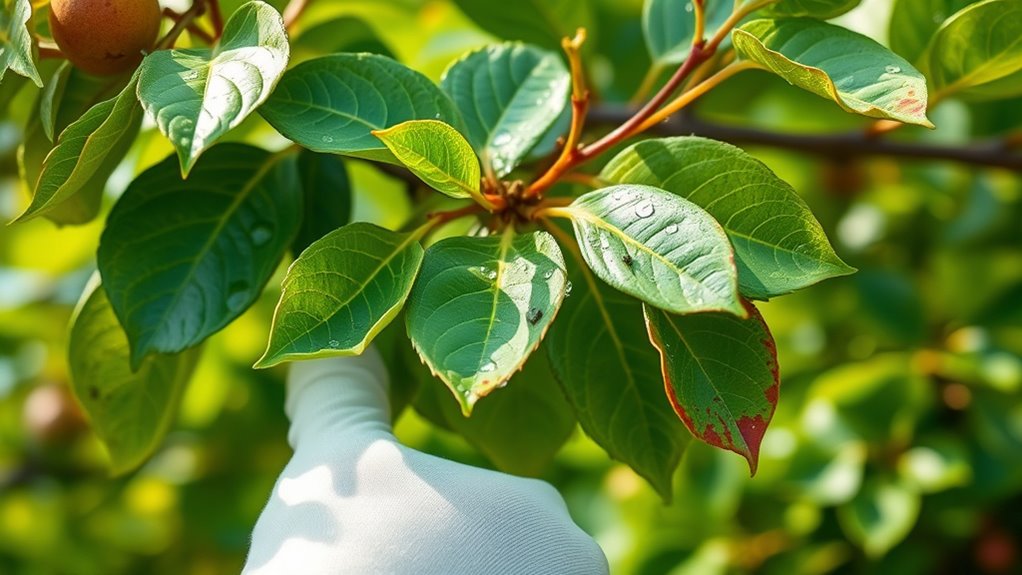
You need to stay alert for common pests and watch for disease symptoms on your plants. Recognizing these signs early helps you target treatments more effectively. Timing your interventions correctly can prevent serious damage and keep your garden healthy. Monitoring cultural and folklore influences can also provide insights into regional plant vulnerabilities and traditional pest management practices.
Identify Common Pests
Have you ever noticed tiny holes, discolored spots, or distorted leaves on your plants? These signs often point to pests that could harm your garden. To protect your plants, you need to master pest identification, which helps you spot common pests early. Look for:
- Small insects crawling on leaves or stems
- Sticky residue or webbing
- Eggs or larvae clinging to plant surfaces
Recognizing these signs quickly allows you to implement pest management strategies before infestations worsen. Identifying pests accurately prevents unnecessary treatments and targets the right pests effectively. Knowing the role of contrast ratio in projectors can also help in assessing the visual impact of pest-infested plants in visual displays. Being proactive in pest identification helps keep your plants healthy and vibrant, avoiding damage that could impact their growth and flowering.
Recognize Disease Symptoms
While spotting pests is essential, recognizing disease symptoms is equally important to maintaining healthy plants. Disease identification involves observing specific signs, such as spots, discoloration, or wilting, that indicate a problem. Symptom recognition helps you catch issues early before they spread or cause severe damage. Look for unusual patterns like black or moldy growth, soft or rotted areas, or leaf curling. Understanding these signs allows you to differentiate between pests and diseases, ensuring you take the right action. Regularly inspect your plants closely, especially during seasonal changes when diseases tend to emerge. The quicker you identify symptoms, the easier it is to prevent serious outbreaks, keeping your garden healthier and more productive. Additionally, being aware of vibrational energy can help you maintain a positive environment that supports plant health.
Timing Treatments Effectively
Timing treatments effectively is crucial because applying them at the right moment can prevent pests and diseases from causing significant damage. Recognizing seasonal myths and debunking pruning myths helps you avoid unnecessary or mistimed treatments. To maximize impact, consider these tips:
- Treat when pests or diseases are actively present, not just based on calendar dates.
- Use weather patterns to decide the best times—damp conditions can spread diseases faster.
- Remember that seasonal myths can lead to mistimed treatments; always observe plant health first.
- Implement risk assessment procedures to understand the potential vulnerabilities of your plants and tailor your timing accordingly.
Evaluate the Timing of Flowering and Fruit Production
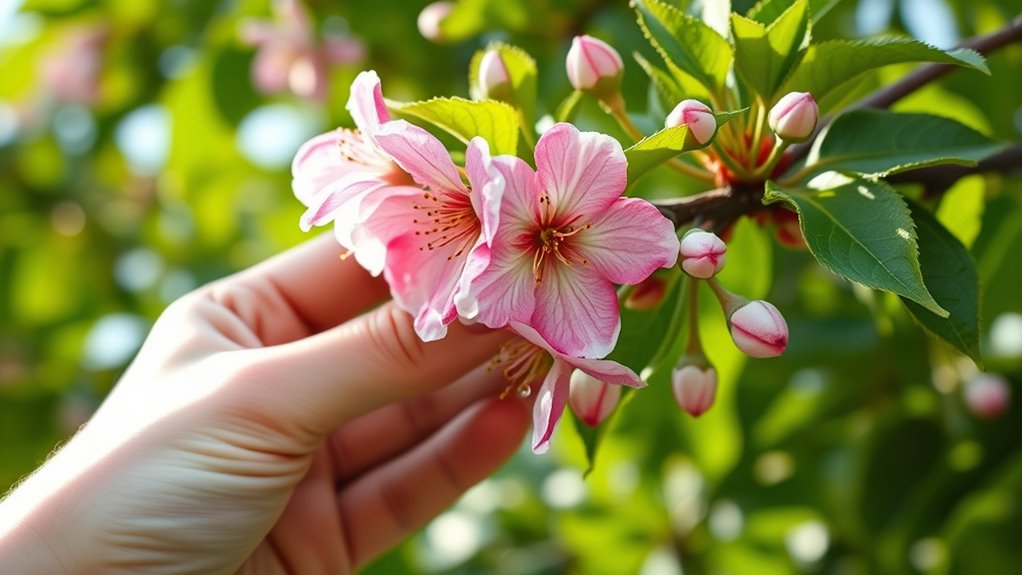
To optimize your pruning schedule, you need to comprehend your plants’ bloom cycles and when they typically flower. Keep track of fruit development stages to spot patterns and adjust your timing accordingly. By doing this, you’ll ensure your pruning supports healthy flowering and abundant fruit production. Regularly assessing your garden’s space and organization can further enhance your overall plant health and growth.
Understand Bloom Cycles
Understanding bloom cycles is essential for effective pruning because it helps you anticipate when your plants will flower and produce fruit. Knowing the timing of blooms allows you to plan pruning without disrupting flower color or fruit set. For example, pruning too severe during bud formation can reduce flowering or alter flower color. Additionally, recognizing the seasonal patterns of your plants can improve overall health and productivity. Remember: – Bloom timing varies based on plant type and season – Pruning just before blooming can diminish flower display – Adjust pruning severity according to bloom cycle stages
Track Fruit Development
Monitoring the progress of fruit development helps you determine the most favorable moments for pruning and other maintenance tasks. By observing how your fruit ripens, you can identify peak stages for harvest timing and avoid premature or delayed picking. Keep an eye on color changes, firmness, and size, as these indicators reveal how close your fruit is to maturity. Tracking these details allows you to plan pruning activities around fruit set and development, ensuring you don’t disrupt flowering or fruit formation unnecessarily. Timing your interventions based on fruit ripening progress helps improve overall yield and quality. Additionally, understanding the growth cycle of your trees allows for more precise scheduling and healthier plant development. Staying attentive to these signs ensures you’re making informed decisions, aligning your pruning schedule with natural growth cycles for healthier trees and better harvests.
Adjust Pruning Timing
Evaluating the timing of flowering and fruit production is essential for maximizing your pruning schedule. If you notice blooms or fruit forming too early or too late, it may be time to adjust your pruning. Proper timing ensures healthy growth and better yields. Consider these factors:
- Improving soil health can influence flowering and fruiting cycles.
- Adjust your watering schedules to support ideal plant development.
- Prune when plants are dormant or just before new growth begins to encourage better flowering.
Consult Local Gardening Experts or Resources
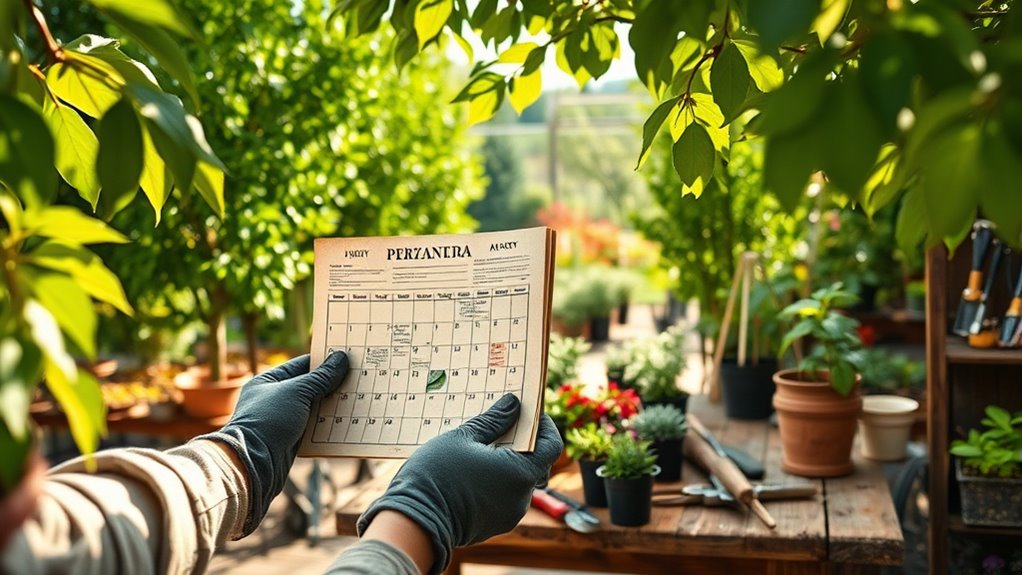
While pruning calendars can offer general guidance, consulting local gardening experts or resources provides tailored advice that considers your specific climate and plant conditions. Local expert advice helps you understand the nuances of your region, ensuring you prune at the right time and avoid damaging your plants. Reach out to local nurseries, horticultural societies, or extension services for accurate, up-to-date information. Gardening resources such as regional planting guides or online forums also offer insights tailored to your area. By tapping into these sources, you gain practical knowledge that surpasses generic calendars, reducing mistakes and promoting healthier growth. Additionally, understanding your regional planting zones can improve your pruning decisions, ensuring you’re working with the right timing and techniques for your environment. Remember, personalized advice from trusted experts makes your pruning efforts more effective and aligned with your local environment.
Frequently Asked Questions
How Do Pruning Calendars Vary Across Different Plant Species?
Pruning calendars vary across plant species because each requires species-specific guidance and seasonal timing for ideal health. You should consider the growth cycle, flowering habits, and dormancy period of each plant. For example, fruit trees need pruning during dormancy, while flowering shrubs often require pruning right after blooming. By understanding these differences, you guarantee your pruning efforts promote healthy growth and abundant blooms, tailored to each plant’s unique needs.
Are There Eco-Friendly Pruning Methods I Should Consider?
Think of your garden as a thriving community where every action matters. You should consider eco-friendly pruning methods like sustainable pruning and organic techniques, which nurture your plants and protect the environment. These methods reduce chemical use and encourage healthy growth naturally. By choosing organic methods, you become a steward of your garden’s future, ensuring it stays vibrant and resilient for generations to come.
How Can I Safely Prune Plants Without Damaging Them?
To safely prune plants without damage, start by using sharp, clean tools to prevent plant disease. Follow pruning timing tips, like trimming during dormancy or early growth stages. Make clean cuts at a slight angle to promote healing. Always remove dead or diseased branches first, guaranteeing proper airflow. This approach helps with plant disease prevention and ensures your pruning promotes healthy growth without harming your plants.
What Tools Are Best Suited for Different Pruning Tasks?
You’ll find that choosing the right pruning tool makes all the difference in optimizing your pruning technique. For delicate branches, use sharp, bypass pruners to make clean cuts, while loppers handle thicker stems efficiently. For deadwood or shaping, a pruning saw works best. Investigating tool effectiveness shows that proper pruning tool selection not only protects your plants but also speeds up the process, ensuring healthier growth with less effort.
How Do Pruning Practices Differ Between Young and Mature Plants?
When pruning young plants, you focus on gentle cuts to shape growth stages and encourage strong structure. Use light pruning intensity to avoid stressing delicate tissues. For mature plants, increase pruning intensity to remove deadwood, promote airflow, and maintain productivity. You’ll trim more aggressively, shaping the plant’s overall form and health. Always adjust your technique based on the plant’s growth stage, ensuring you support its development effectively.
Conclusion
Before diving into your pruning calendar, take time to truly understand your plants’ patterns and preferences. Gather guidance, gauge growth, and get a grasp on your garden’s unique climate quirks. By blending knowledge with keen observation, you’ll cultivate confidence and clarity. Remember, patience and preparation pave the path to perfect pruning—prompting healthier, happier plants and a more prosperous garden. Prepare properly, prune precisely, and enjoy your flourishing, fabulous foliage.
